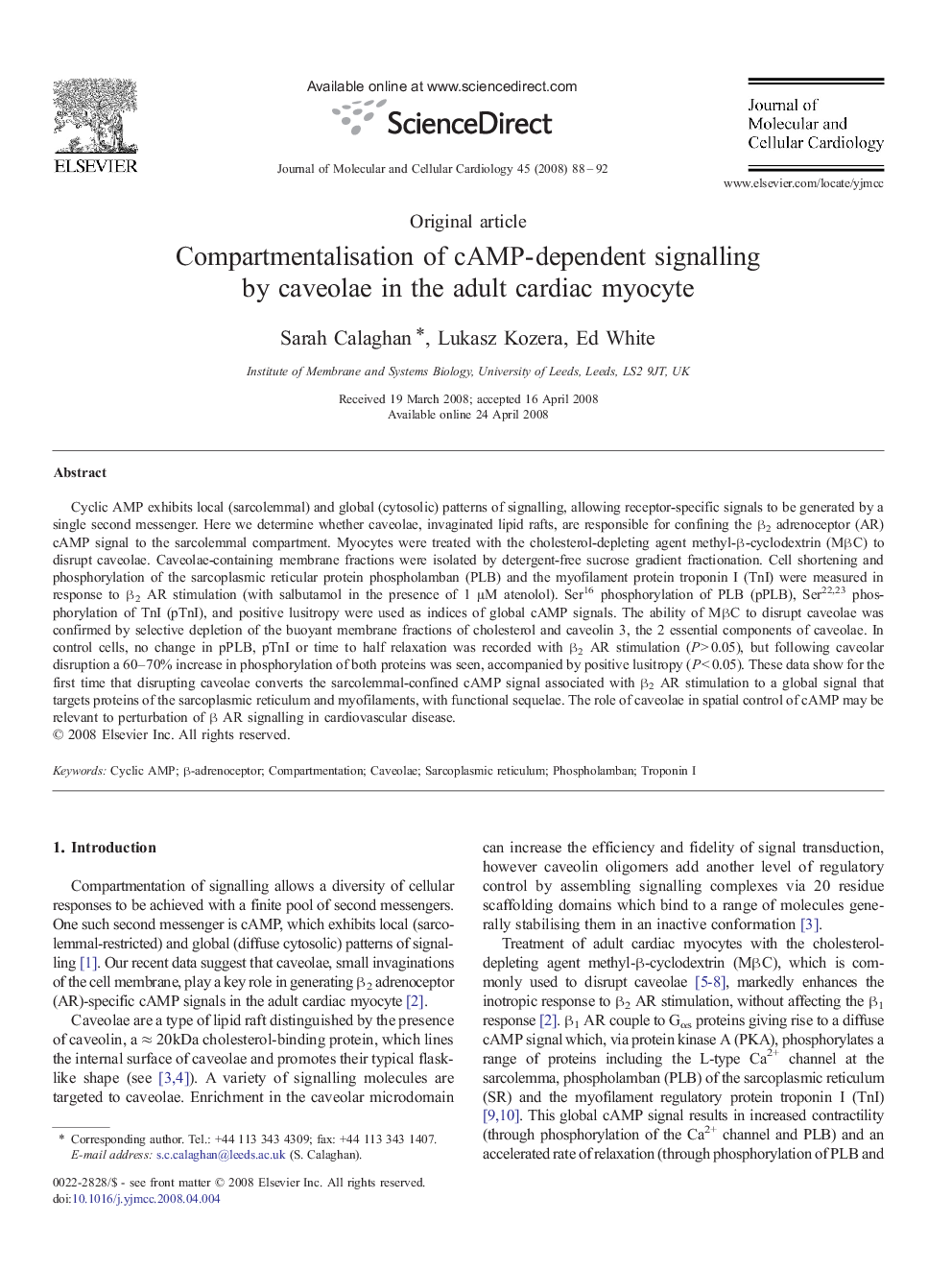| Article ID | Journal | Published Year | Pages | File Type |
|---|---|---|---|---|
| 2191227 | Journal of Molecular and Cellular Cardiology | 2008 | 5 Pages |
Cyclic AMP exhibits local (sarcolemmal) and global (cytosolic) patterns of signalling, allowing receptor-specific signals to be generated by a single second messenger. Here we determine whether caveolae, invaginated lipid rafts, are responsible for confining the β2 adrenoceptor (AR) cAMP signal to the sarcolemmal compartment. Myocytes were treated with the cholesterol-depleting agent methyl-β-cyclodextrin (MβC) to disrupt caveolae. Caveolae-containing membrane fractions were isolated by detergent-free sucrose gradient fractionation. Cell shortening and phosphorylation of the sarcoplasmic reticular protein phospholamban (PLB) and the myofilament protein troponin I (TnI) were measured in response to β2 AR stimulation (with salbutamol in the presence of 1 μM atenolol). Ser16 phosphorylation of PLB (pPLB), Ser22,23 phosphorylation of TnI (pTnI), and positive lusitropy were used as indices of global cAMP signals. The ability of MβC to disrupt caveolae was confirmed by selective depletion of the buoyant membrane fractions of cholesterol and caveolin 3, the 2 essential components of caveolae. In control cells, no change in pPLB, pTnI or time to half relaxation was recorded with β2 AR stimulation (P > 0.05), but following caveolar disruption a 60–70% increase in phosphorylation of both proteins was seen, accompanied by positive lusitropy (P < 0.05). These data show for the first time that disrupting caveolae converts the sarcolemmal-confined cAMP signal associated with β2 AR stimulation to a global signal that targets proteins of the sarcoplasmic reticulum and myofilaments, with functional sequelae. The role of caveolae in spatial control of cAMP may be relevant to perturbation of β AR signalling in cardiovascular disease.
